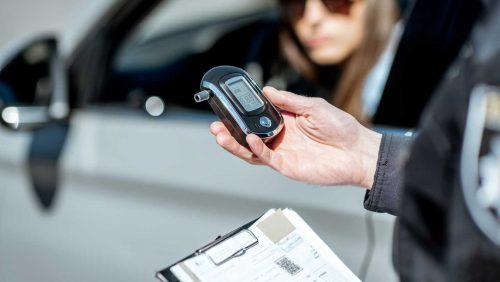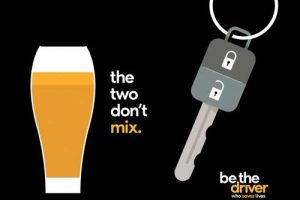Impaired Driving
Driving while under the influence of drugs or alcohol is incredibly dangerous. Make a plan to get home safely and always drive sober.

Over the past five years in Maryland, nearly 800 people have been killed in crashes involving an impaired driver. In fact, deaths resulting from impaired driving crashes amount to about a third of all roadway fatalities. Fortunately, there are many ways to prevent these tragedies from occurring, including rideshare services, taxis, designating a sober driver, or using public transportation.
IMPAIRED DRIVING FACTS:
Impaired Driving is a leading cause of motor vehicle crashes and fatalities. See all crash data.
-
158
The average number of fatalities resulting from impaired (alcohol and/or drugs) driving.
Alcohol, illegal drugs, and even prescription medication can have drastic effects on your ability to drive.
-
2,743
The average number of injuries resulting from impaired (alcohol and/or drugs) driving.
Be the MAKE A PLAN Driver and never let a friend or family member drive if they have been using alcohol or drugs.
Impaired Driving is Deadly
Alcohol and drugs have effects that result in a person’s inability to drive as well as they normally could, or in many cases, not able to drive at all. Slower reaction times, reduced hand-eye coordination, and a decline in overall driving performance result from impairment. Even some prescription medications can have negative side effects that impair your ability to drive.
Each year, tens of thousands of people are arrested on Maryland’s roads for drunk or drugged driving. Law enforcement conducts checkpoints and saturation patrols along Maryland roadways. An elite team of five specially trained Maryland State troopers assigned to the State Police Impaired Driving Reduction Effort (S.P.I.D.R.E.) specifically focuses on reducing the number of impaired drivers from Maryland roadways. The team uses data to identify high-risk areas to reduce the number of alcohol-related crashes in Maryland. The S.P.I.D.R.E. team has saved countless lives since its inception in 2013 by taking more than 4,600 impaired drivers off the road. These types of enforcement efforts remove impaired drivers from our roads, but it begins with drivers making the choice to drive sober.
Before you go out, make a plan to get home safely, and designate a sober driver. A sober driver is someone who does not consume any alcoholic beverages or drugs before driving.
If you know someone is impaired and they try to drive, call them a rideshare or taxi but do not let them get behind the wheel. Being arrested for impaired driving carries serious consequences including hefty fines, possible jail time, and thousands of dollars in court costs. Worst of all, impaired driving often results in serious injury or death, both of which can be avoided through good decision-making.
Be the SOBER Driver. Driving one time under the influence is one time too many.
Commonalities of Impaired Driving Crashes
Alcohol and drugs are substances that reduce the function of the brain, impairing thinking, reasoning, and muscle coordination. All these abilities are essential to operating a vehicle safely.
Most (58 percent) of impaired crashes occur on a Friday, Saturday, or early Sunday. Twice as many impaired driving crashes occur on a Saturday or early Sunday as did on a Monday.
Impaired driving crashes begin to increase from 5 p.m. through 3 a.m. In Maryland, impaired driving fatality incidents between the hours of 9 a.m. and 3 p.m. on weekends have increased in recent years possibly due to shifts in drinking cultures, such as the popularity of brunch and tailgating.
Crashes can occur anywhere but approximately 80 percent of all impaired driving crashes occurred within the Baltimore and Washington metropolitan areas. However, that doesn’t mean impaired driving doesn’t occur elsewhere. No matter where you live, planning for a sober ride home is important.
1 out of 3 (35 percent) of impaired drivers are 25-39 years old. In addition, impaired drivers in their twenties are involved in slightly more than 30 percent of crashes resulting in an injury or fatality.
Noah’s Law
The Drunk Driving Reduction Act of 2016, also known as ‘Noah’s Law,’ requires a person convicted of certain alcohol-related driving offenses to participate in the ignition interlock system program. Legislation went into effect on October 1, 2024, closing a previously existing loophole allowing drunk driving offenders to avoid installation of an interlock device if they received probation before judgment (PBJ) rather than a DUI conviction.
All drivers convicted of driving under the influence of alcohol or who receive probation for a DUI violation will have to blow into an ignition interlock device to prove they haven’t consumed alcohol before their vehicle will start. Ignition interlock devices are required to be installed for six months in the vehicle of anyone who blows above the legal limit of .08 in a breath test, or else the person’s license will be suspended for six months.
A driver who refuses a breath test will have to use the device for nine months or accept a nine-month suspension. “Noah’s Law” is in honor of a 24-year-old police officer named Noah Leotta, who was killed by a drunk driver at a sobriety checkpoint in 2015.

The Effects of Blood Alcohol Concentration
BAC and Typical Effects of Various BAC Levels
Credit: National Highway Traffic Safety Administration
| BLOOD ALCOHOL CONCENTRATION (BAC) IN G/DL | TYPICAL EFFECTS | PREDICTABLE EFFECTS ON DRIVING |
| .02 | Some loss of judgment; relaxation, slight body warmth, altered mood | Decline in visual functions (rapid tracking of a moving target), decline in ability to perform two tasks at the same time (divided attention) |
| .05 | Exaggerated behavior, may have loss of small-muscle control (e.g., focusing your eyes), impaired judgment, usually good feeling, lowered alertness, release of inhibition | Reduced coordination, reduced ability to track moving objects, difficulty steering, reduced response to emergency driving situations |
| .08 | Muscle coordination becomes poor (e.g., balance, speech, vision, reaction time, and hearing), harder to detect danger; judgment, self-control, reasoning, and memory are impaired | Concentration, short-term memory loss, speed control, reduced information processing capability (e.g., signal detection, visual search), impaired perception |
| .10 | Clear deterioration of reaction time and control, slurred speech, poor coordination, and slowed thinking | Reduced ability to maintain lane position and brake appropriately |
| .15 | Far less muscle control than normal, vomiting may occur (unless this level is reached slowly or a person has developed a tolerance for alcohol), major loss of balance | Substantial impairment in vehicle control, attention to driving task, and in necessary visual and auditory information processing |


